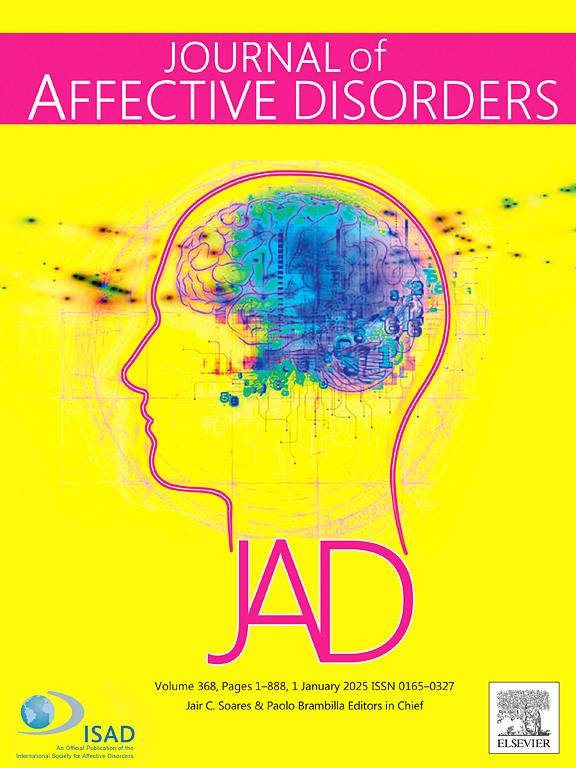Empirical evaluation of three 21st century suicide theories: interpersonal theory of suicide, cultural model of suicide, and the integrated motivational-volitional model
IF 4.9
2区 医学
Q1 CLINICAL NEUROLOGY
引用次数: 0
Abstract
Introduction
Suicide, suicide attempts, and suicidal ideation since the pandemic have been tied to both unemployment and being an essential worker. This study examined three suicide theories – the Interpersonal Theory, the Cultural Model of Suicide, and the Integrated Motivational-Volitional model - in this population.
Methods
Participants were recruited through Prolific in late 2020 if unemployed because of COVID-19 or an essential worker. Participants completed a baseline survey including measures of suicide theories as well as suicide risk. Those experiencing distress were invited to enroll in a randomized trial of mobile apps and the suicide theories' performance in predicting suicide risk was examined in this subsample (N = 843), adjusting for COVID-19 work status and history of suicide attempt.
Results
Cross-sectional analysis showed perceived burdensomeness but not thwarted belongingness predicted suicide risk. Cross-sectional analysis found idioms of distress and cultural sanctions predicting suicide risk while minority stress and social discord did not. In cross-sectional analysis, both defeat and entrapment predicted suicide risk with partial mediation of defeat through entrapment. In cross-lagged analysis, defeat predicted entrapment, but entrapment did not predict defeat.
Conclusion
There was partial support for the Interpersonal and Cultural theories of suicide and full support for the Integrated Motivational-Volitional model's primary pathway.
21世纪三种自杀理论的实证评价:人际自杀理论、自杀文化模型和动机-意志综合模型。
导言:自大流行以来,自杀、自杀企图和自杀意念都与失业和成为必不可少的工人联系在一起。这项研究在这一人群中检验了三种自杀理论——人际理论、自杀的文化模型和综合动机-意志模型。方法:参与者在2020年底通过多产招募,如果因COVID-19失业或必不可少的工人。参与者完成了一项基线调查,包括自杀理论和自杀风险的测量。那些经历痛苦的人被邀请参加移动应用程序的随机试验,并在调整COVID-19工作状态和自杀企图史的情况下,在该子样本中检验自杀理论预测自杀风险的表现(N = 843)。结果:横断面分析显示,感知负担而非受挫归属感预测自杀风险。横断面分析发现,痛苦和文化制裁习语预测自杀风险,而少数民族压力和社会不和谐则没有预测自杀风险。在横断面分析中,失败和诱捕都预测自杀风险,并通过诱捕部分调解失败。在交叉滞后分析中,失败预示着陷阱,但陷阱并不预示着失败。结论:自杀的人际和文化理论得到部分支持,动机-意志综合模型的主要途径得到充分支持。
本文章由计算机程序翻译,如有差异,请以英文原文为准。
求助全文
约1分钟内获得全文
求助全文
来源期刊

Journal of affective disorders
医学-精神病学
CiteScore
10.90
自引率
6.10%
发文量
1319
审稿时长
9.3 weeks
期刊介绍:
The Journal of Affective Disorders publishes papers concerned with affective disorders in the widest sense: depression, mania, mood spectrum, emotions and personality, anxiety and stress. It is interdisciplinary and aims to bring together different approaches for a diverse readership. Top quality papers will be accepted dealing with any aspect of affective disorders, including neuroimaging, cognitive neurosciences, genetics, molecular biology, experimental and clinical neurosciences, pharmacology, neuroimmunoendocrinology, intervention and treatment trials.
 求助内容:
求助内容: 应助结果提醒方式:
应助结果提醒方式:


